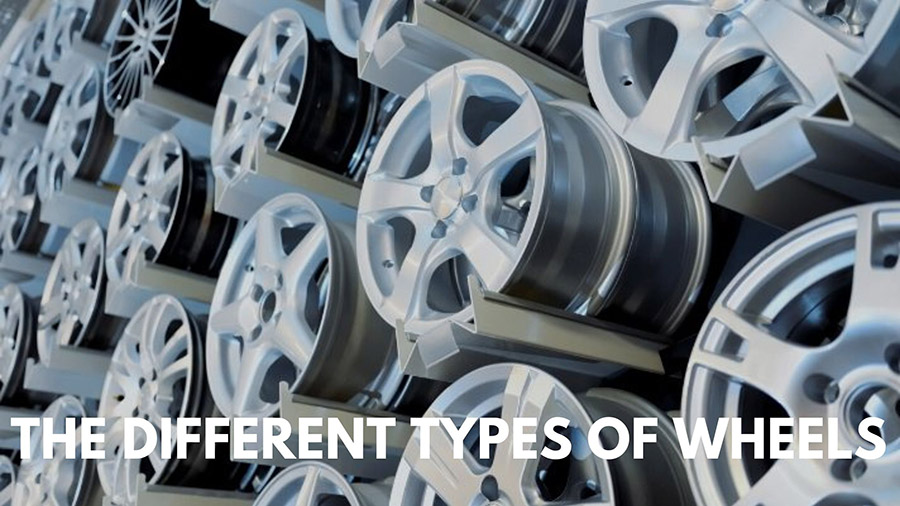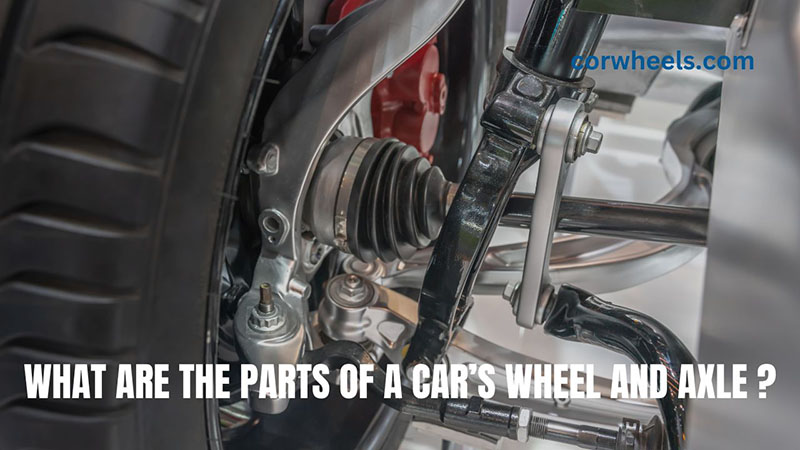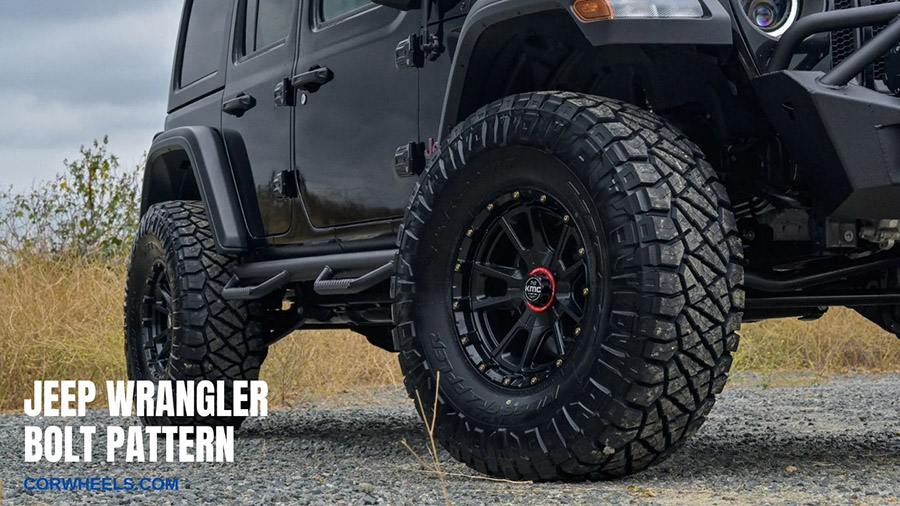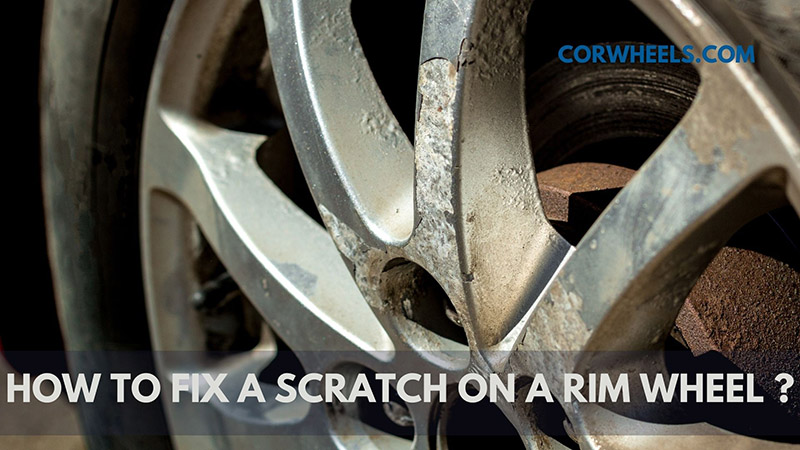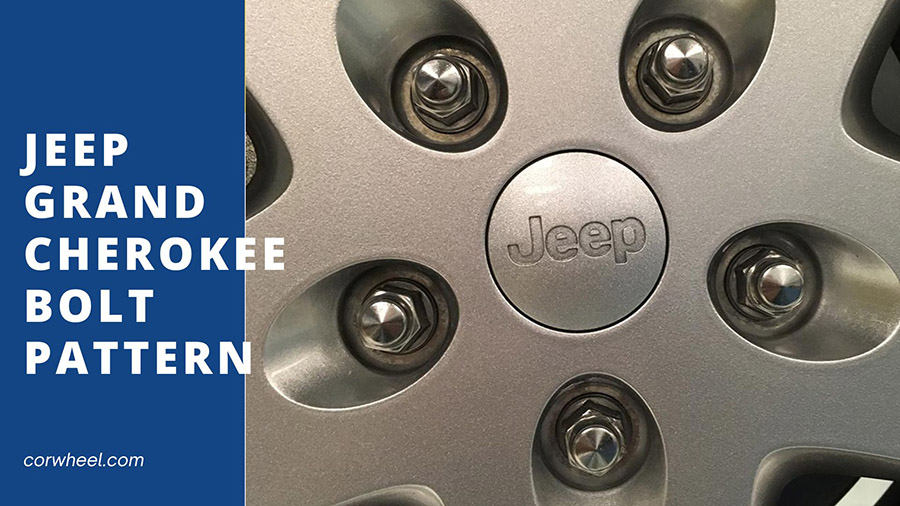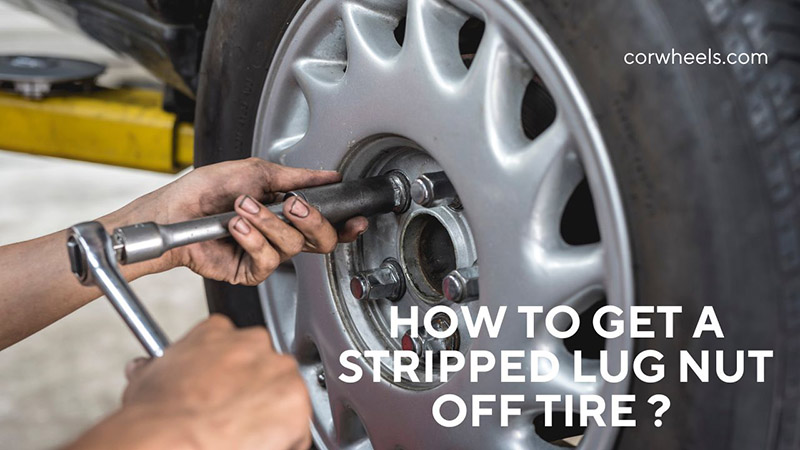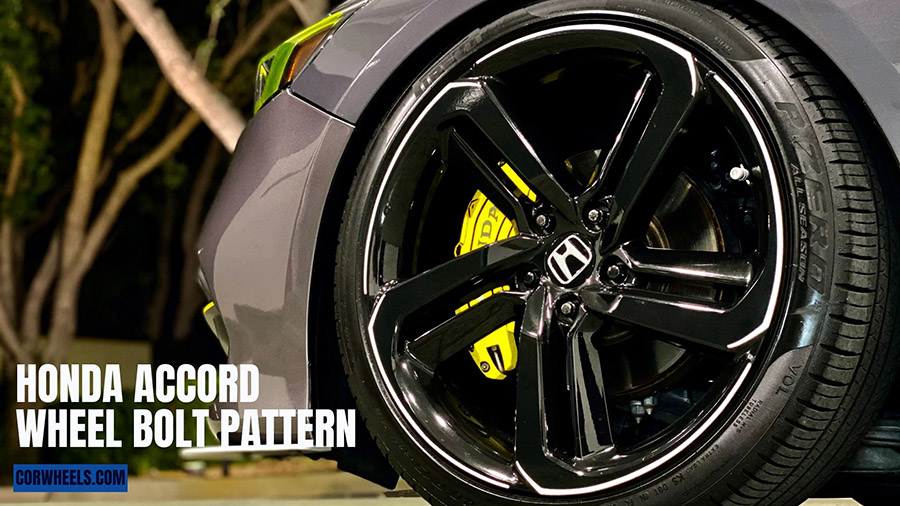While most people ignore wheel types during their browsing – in the belief that all wheels look and function identically – let us break some news: there are various styles of rims and wheels on the market.
Remembering all these types might feel overwhelming for beginners, sure. But at the very least, keeping in mind that they are far from similar would help you make better and more informed buying decisions.
My guide would dig further into each. Keep scrolling!
In this article:
What Are The Types of Wheels?
Wheels are mostly divided into 3 material types (steel, alloy, carbon fiber wheels), 4 construction categories (forged, cast, pressed metal, flow forming), and 4 finishes (clear coat, powder coat, paint, and chrome plating).
You can imagine how many possible combinations stem from there.
A. In Terms of Materials
A1. Steel Wheels/Standard Wheels
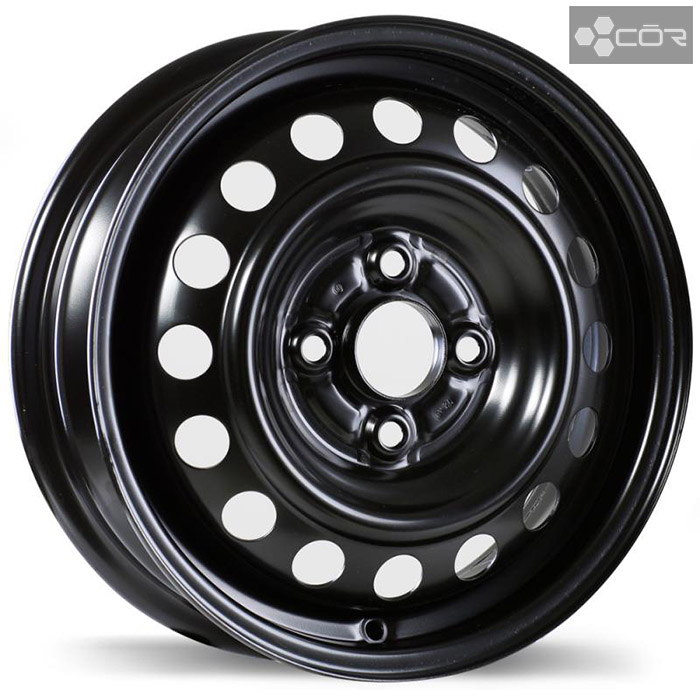
Steel wheels are definitely crowned as the king of wheels when it boils down to popularity and accessibility. Long story short: if you only need basic wheels that could carry a decent job, steel wheels are a safe, natural choice that drivers of all levels could fall back on
Durable and tough, they can handle all seasons – including winter, even in freezing climates. Plus, they are much cheaper than any other wheel option on the list – a great choice for tight-budget customers since it allows them to pool extra investments and funds on other car parts.
However, note that steel wheels are just it: fulfilling your most basic requirements.
Those who wish to make their cars stand out from the rest might not particularly be fond of Steelies (though, in my opinion, you can easily compensate for the lack of exciting visuals with a couple of new trims).
People aiming for beyond-standard performance, such as impressive acceleration, would not find steel wheels appealing.
Not to mention, their heavy materials can cause some unnecessary drags.
A2. Alloy Wheels
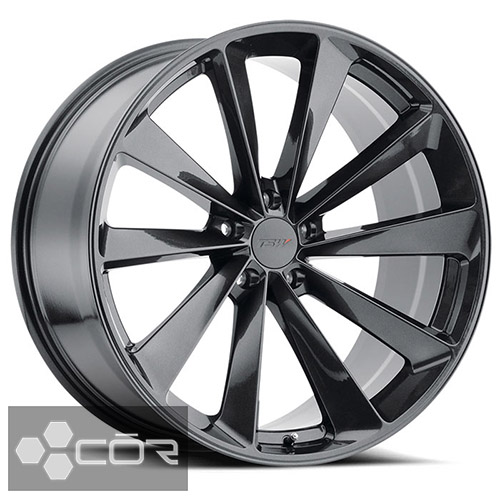
The term “Alloy” often alludes to metal mixtures.
In the context of car wheels, this mixture usually comprises nickel and aluminum (or magnesium and aluminum). Still, since aluminum remains the core substance, these wheels are simply referred to “as “aluminum wheels.”
It does not take a genius to figure out why alloy wheels have been the rage; they shine where steel wheels do not. Their lighter construction facilitates better acceleration, for instance, and provides more agile experiences.
Such lightness also paves the way for smoother rides on rough terrains, making alloy wheels a perfect choice for cars driven under special circumstances or occasions.
However, that does not mean alloy is the ultimate, flawless option; its lightweight serves as a double knife that compromises the wheels’ durability.
By illustration, they suffer from more tear and wear in extreme winter than Steelies and even crack under excessive pressure. (of course, those living in warmer climates never have to worry about such issues, but we are merely giving you a heads-up.)
Plus, if your budget has never been generous in the first place, do not forget that alloy wheels are much costlier than Steelies. In their defense, they can save you a lot in the long term thanks to reduced fuel consumption – but you should still think twice before spending your money on alloy wheels.
A3. Fiber Carbon Wheels
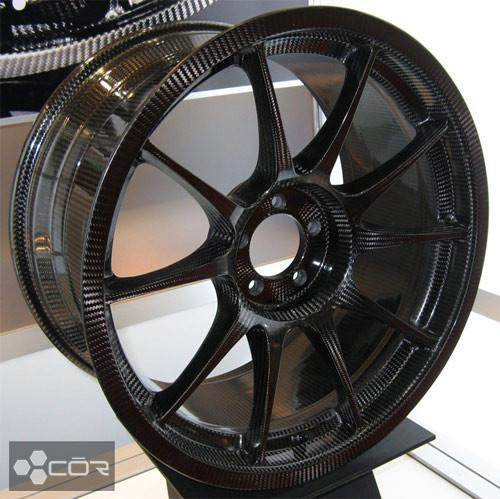
Like alloy wheels, their lightweight, compact designs help a lot with acceleration. And there’s one thing that makes them twice as good as alloys: the sidewalls and materials are much stronger, allowing them to withstand extreme and challenging driving conditions.
In simpler terms, fiber carbon wheels combine the best of Stellies and alloys, leaving all the blatant weaknesses out of the picture. Still, many drivers feel hesitant to settle on fiber-carbon wheels for two important reasons:
- The price (obviously). They are even pricier than alloy.
- Repairs are impossible in the face of severe damage. You will have to purchase entire replacements. Alloy and steel rims, meanwhile, can easily get fixed.
B. In Terms of Construction
B1. Forged Wheels
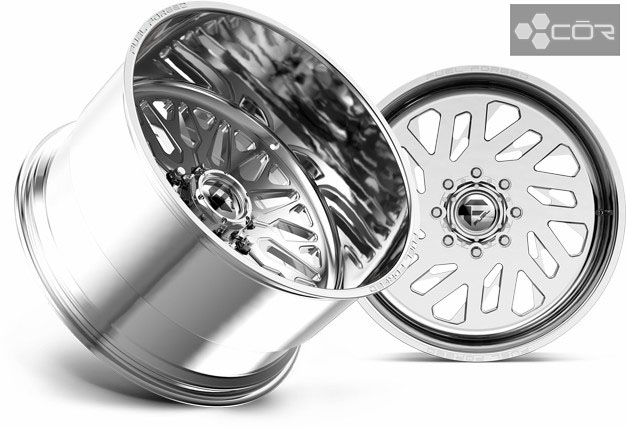
Most alloy wheels (though not all of them) are forged. Specifically, the metal pieces are heated and pressed into forms during manufacturing, creating durable, lighter wheels that cater to many drivers’ demand for lightweight designs.
Do not forget that this intricate process equates to much higher prices. They better suit devoted car enthusiasts than daily drivers.
B2. Cast Wheels
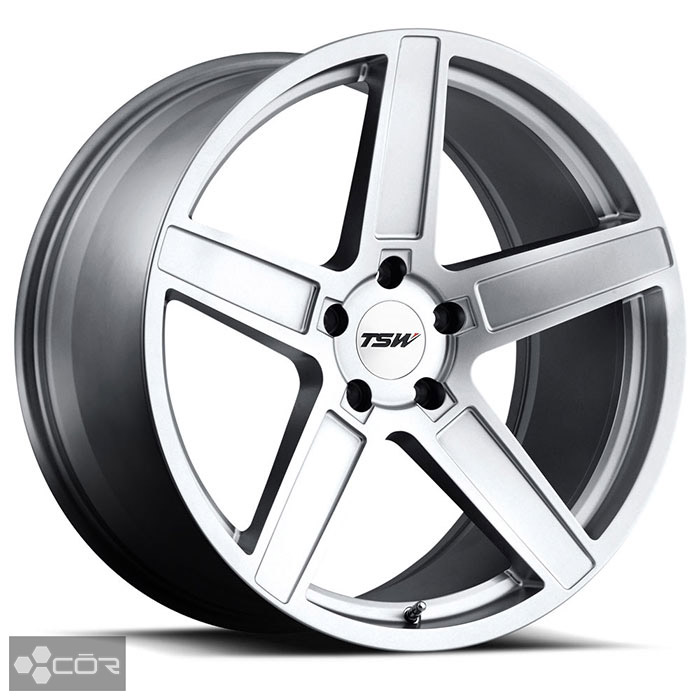
Cast wheels comprise liquified metal. Once the manufacturers have melted the metal, it is poured into molds (wheel-shaped, of course) to cool down and harden.
For most drivers, cast wheels are a decent choice. They are not as lightweight or strong as their forged counterparts, of course, but the affordable price is what seals the deal.
B3. Pressed Metal
Pressed metal methods are among the most common manufacturing procedures, particularly for basic wheels like Steelies. Basically, the wheels are welded out of metal sheets – and that’s it.
These wheels are simple, straight to the point, and hardly flashy. But for most regular drivers who do not have much demand for aesthetics, they are enough.
B4. Flow Formed
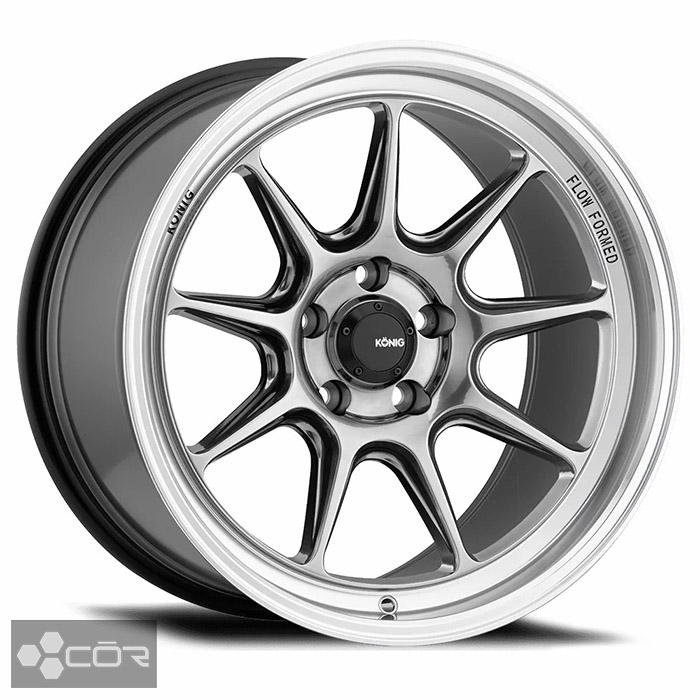
From the first few looks, flow forming seems barely different from casting: the liquefied metal is poured into casts to manifest the final form of the wheel. But there’s one difference: the wheel barrel is spun and heated until finished.
One could say flow forming is a hybrid of forging and casting – so no wonder it enjoys benefits from both: less expensive, lighter, and efficient.
C. In Terms of Finishes
C1. Clear Coat
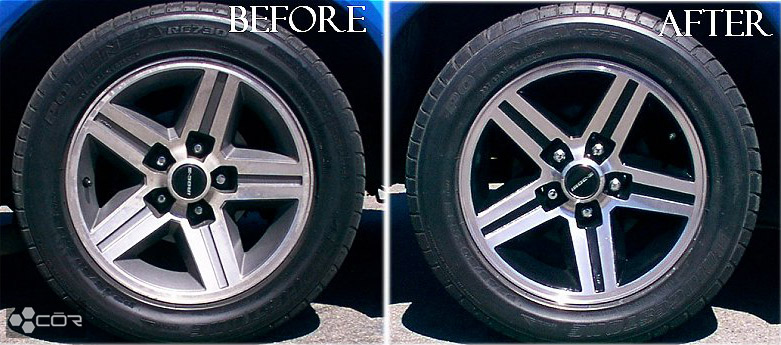
Nothing is complex about a clear coat finish: it simply adds more shine to the metal. The tendency to get scuffed has always been one of its major downsides – but you can easily touch up the finish with thicker layers to avoid damage, so no worries there.
C2. Painted Finishes
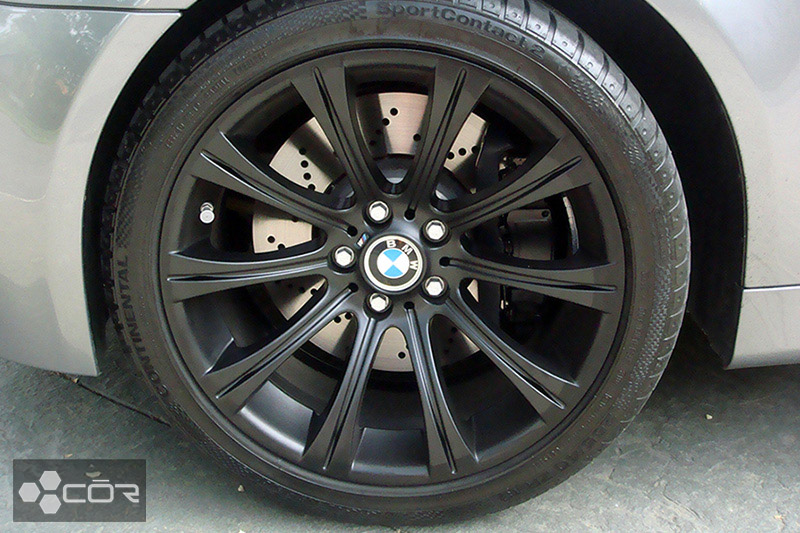
Car owners who love to wow other passersby with aesthetics and flashy wheels should definitely turn to painted finishes; sports cars have incorporated them for ages! And on another note, I suggest you have clear coating layers on the top to keep the painting job from damage.
Aside from the expense (which is to be expected), painted finishes barely have any downside.
C3. Powder Coating
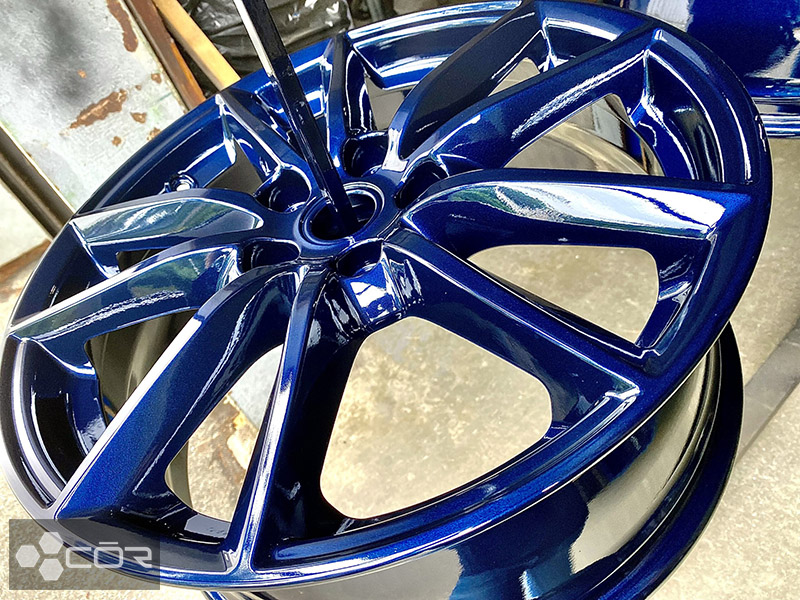
Powder coating has been surprisingly popular in recent years, even threatening to dethrone paint finishes within certain communities.
Like paint, powder coating also gives the wheels more colors. The sheer aspect that sets the two apart is the application and material: with powder coating, the dry substance gets sprayed on the metal before being cured via heat.
As such, their colors tend to get more popping and vibrant. Not to mention, its shelf life is impressive, easily lasting for years in one go. Just brace yourself for the price; since the job requires expertise, it is inevitably the most expensive finish option.
C4. Chrome Plating
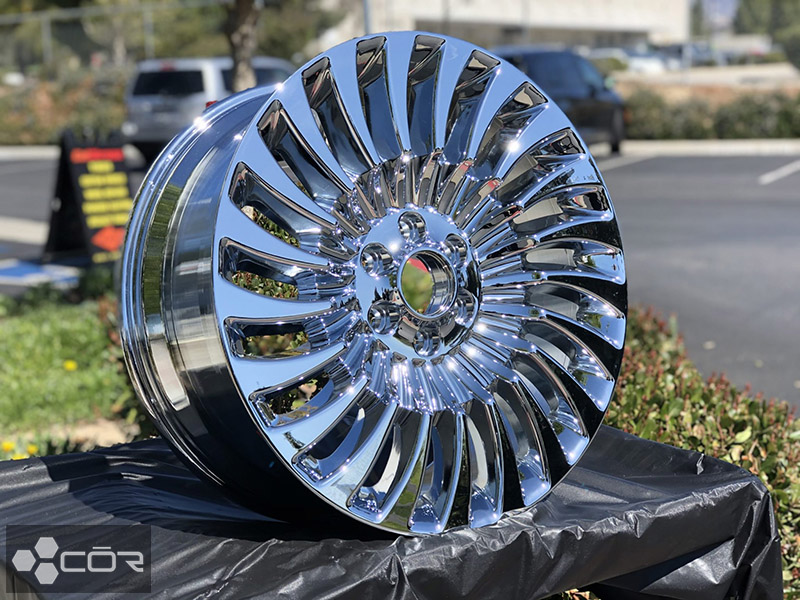
Have you ever wondered about the reason behind the shiny, bright wheels on classic cars? That’s right; it’s the chrome plating that makes all the magic – a common choice among drivers who want to give their wheels more popping vibes without adding extra, specific colors.
Unlike other options, chrome scratches very easily and hence, demands lots of upkeep and maintenance. Plus, they tend to lose shine and develop pits over time. So if you still decide to go through with it, always keep your eye on these chrome wheels.
How Are Wheels Constructed?
Single-piece wheels mostly use the four methods described above (forging, casting, flow forms, and pressed metals). Still, high-light technologies are sometimes involved in light racing cars, in which the materials are roller-compressed in aluminum barrels to manifest the right form and shape.
Multi-piece options (two-piece wheels or three-piece wheels) utilize more or less the same procedures described above for each individual piece. Then, the manufacturers assemble all the pieces together via welding and bolts.
How to Choose The Right Wheels for Your Vehicle?
Most car models are very specific about the specs for entire wheel offset, backspacing, center bores, and bolt patterns. Consulting these information tidbits in the manual or via the manufacturer would be a great choice, especially for first-time buyers.
The best bet is to discuss these numbers with the retailers and ask them where you can find wheels that match these ratings. Under their instructions, you will feel much less overwhelmed.
What Are The Most Popular Wheel Brands?
Enkei, BBS, König, TSW, AODHAN, Rotiform, and Ferrada have been so widely recognized that no introductions are needed. Their branches are available in numerous corners around the globe, ensuring you can access their support anytime in need.
Conclusion
Just discussing the wide variety of wheel types alone can give beginners a headache – and I have yet to talk about wheel patterns, backspacing, and other relevant measurements.
That’s quite the evidence of how complex cars can get, so feel free to write to me anytime if you still feel confused after this article.
See more: Wheel vs Tire vs Rim

